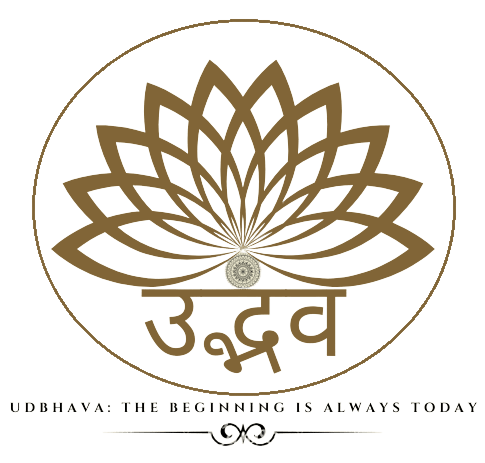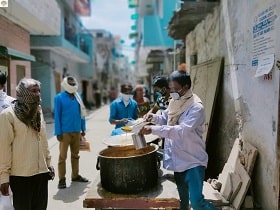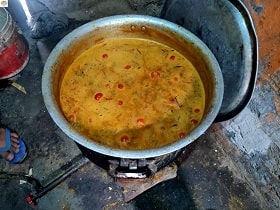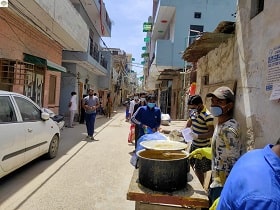
Agriculture
With the increase in population our compulsion would be not only to stabilize agricultural production but to increase it further in a sustainable manner. The scientists have realized that the ‘Green Revolution’ with high input use has reached a plateau and is now sustained with diminishing return of falling dividends. Thus, a natural balance needs to be maintained at all cost for the existence of life and property. The obvious choice for that would be more relevant in the present era, when these agrochemicals which are produced from fossil fuel and are not renewable and are diminishing in availability. It may also cost heavily on our foreign exchange in future. The solution lies in organic farming. Organic farming is a method of crop and livestock production that involves much more than choosing not to use pesticides, fertilizers, genetically modified organisms, antibiotics and growth hormones.The key characteristics of organic farming include
● Protecting the long term fertility of soils by maintaining organic matter levels, encouraging soil biological activity, and careful mechanical intervention
● Providing crop nutrients indirectly using relatively insoluble nutrient sources which are made available to the plant by the action of soil microorganisms
● Nitrogen self-sufficiency through the use of legumes and biological nitrogen fixation, as well as effective recycling of organic materials including crop residues and livestock manures
● Weed, disease and pest control relying primarily on crop rotations, natural predators, diversity, organic manuring, resistant varieties and limited (preferably minimal) thermal, biological and chemical intervention
● The extensive management of livestock, paying full regard to their evolutionary adaptations, behavioural needs and animal welfare issues with respect to nutrition, housing, health, breeding and rearing
● Careful attention to the impact of the farming system on the wider environment and the conservation of wildlife and natural habitats Organic farming system in India is not new and is being followed from ancient time. It is a method of farming system which primarily aimed at cultivating the land and raising crops in such a way, as to keep the soil alive and in good health by use of organic wastes (crop, animal and farm wastes, aquatic wastes) and other biological materials along with beneficial microbes (bio fertilizers) to release nutrients to crops for increased sustainable production in an eco-friendly pollution free environment. As per the definition of the United States Department of Agriculture (USDA) study team on organic farming “organic farming is a system which avoids or largely excludes the use of synthetic inputs (such as fertilizers, pesticides, hormones, feed additives etc) and to the maximum extent feasible rely upon crop rotations, crop residues, animal manures, off-farm organic waste, mineral grade rock additives and biological system of nutrient mobilization and plant protection”.
The world has already tasted the ill effects of chemicals based agriculture in terms of land pollution, water pollution, air pollution and even worse like causing deadly diseases like cancer in different parts. In India, Punjab and Haryana are major examples of such degradations taking place in the name of green revolution over the past few decades. The world is looking now to organic products from agriculture even at premium prices, where no chemicals are used in agriculture practices. This offers a large scope for building rural enterprises, right from testing, certification, training to production and processing in pre and post agriculture practices. This requires all kinds of skills, right from high level modern scientific expertise available in laboratories and universities to traditional agricultural practices already available with people. Animal husbandry is closely linked with agriculture. There are several inputs that the animal husbandry shall have to provide to practices of organic agriculture like organic manure from cow dung, natural pest repellents from cow urine and many other combinations from animal husbandry products. In fact, there are many products these days being prepared from cow urine and cow dung which are capable of being commercially exploited. Other than agriculture, there are several applications in medicines, utility items etc. All these provide huge opportunities for start-ups and entrepreneurship. In addition, the food products from animal husbandry including milk, curd, ghee which are traditionally and culturally highly desirable and consumed in large quantities in India are not easily available in adequate quantity and with assured quality. The statistics say that only 10 percent of the milk produced in India is handled by the organized sector through cooperatives etc. Rest remains as an unorganized sector with no control of quality. Increasing production, assuring quality, regular supply and freshness desired in such products
What we can do?
Our Gallery .
न त्वहं कामये राज्यं न मोक्षं न स्वर्गं नापुनर्भवम् कामये दुःखतप्तानां प्राणिनामार्तिनाशनम्














